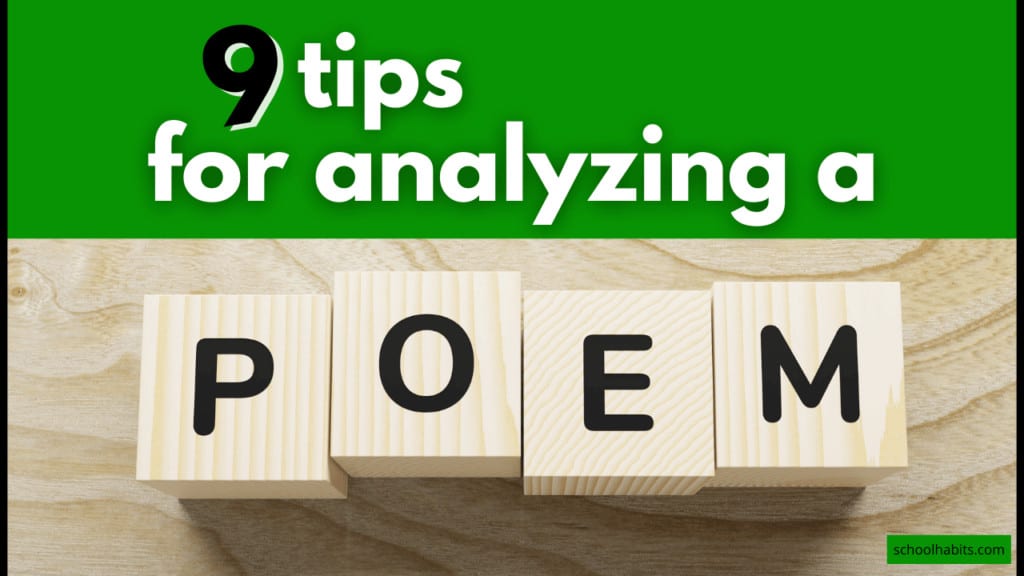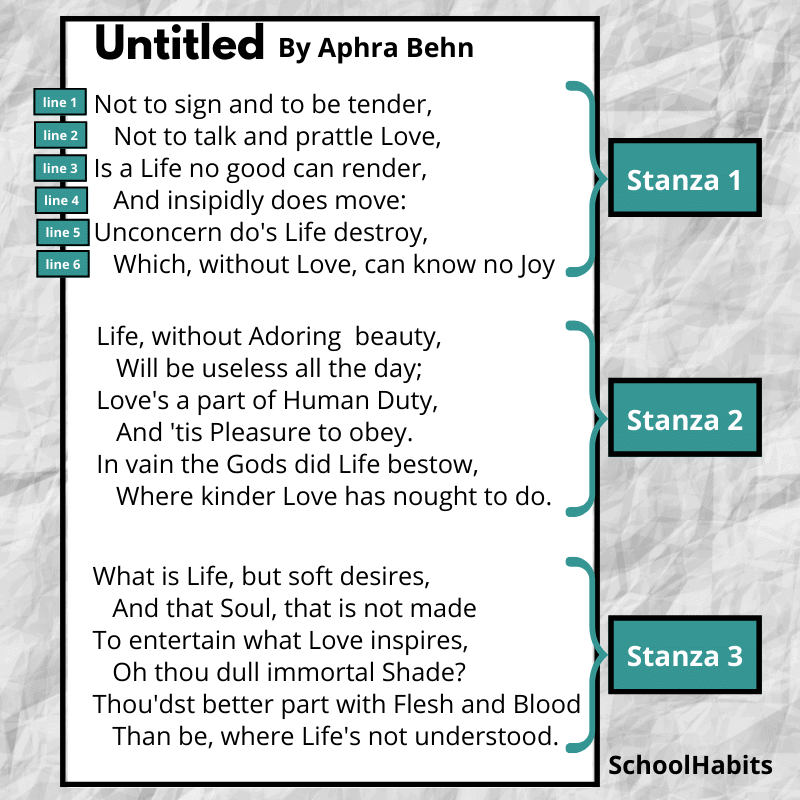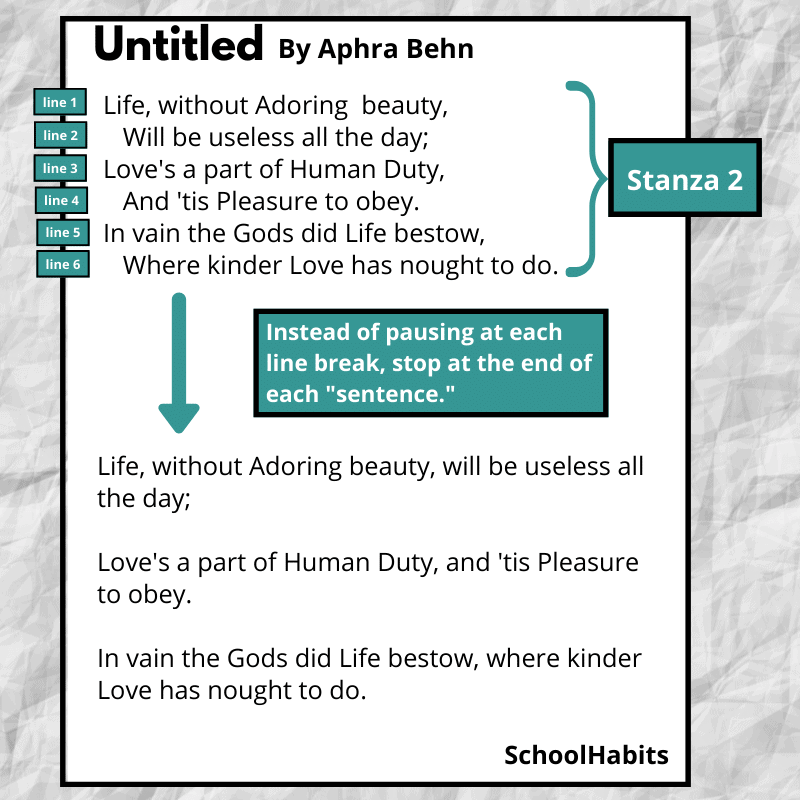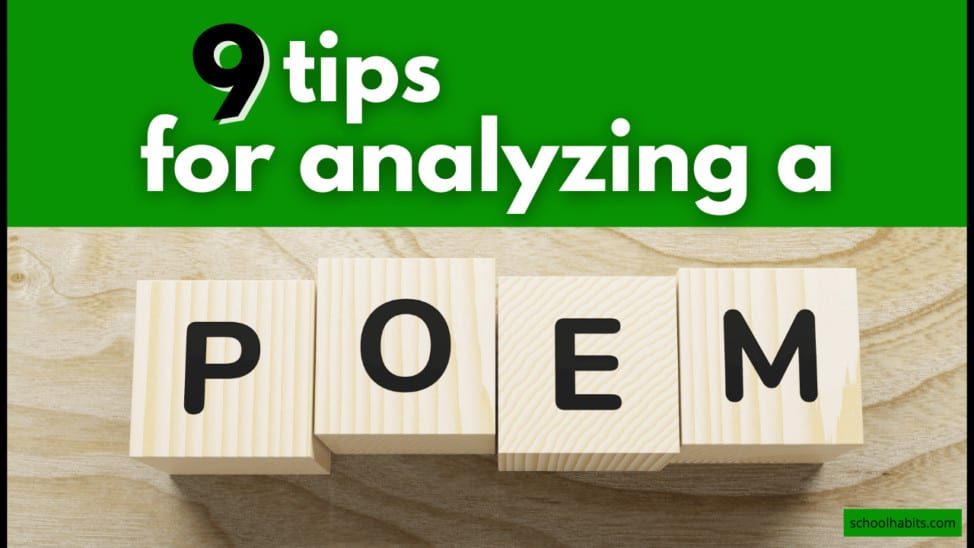
By Katie Azevedo, M.Ed.
Have you ever read a poem, made it to the last line, only to realize that you have absolutely no idea what it’s about? Cool. Keep reading.
Students begin to analyze poetry in elementary school, and often have to do so up through college. Regardless of what grade you’re in, the following 9 tips for analyzing poetry should help you get through most poems with sufficient understanding.
Tips for analyzing poetry
The following 9 tips for analyzing poetry are meant to be followed in chronological order. (If you’re looking for how to analyze quotations in your school essays, here’s my step-by-step guide for doing that.)
1. Read the poem one time through without stopping.
Assuming you are not going to fully understand the poem (and being okay with that), read it once straight through before you begin to analyze it. During this initial reading, your goal is to simply “get a sense” of what the poem is about, paying special attention to the tone. (See tip 2) Don’t worry about unfamiliar words or references at this point; it’s okay if you don’t understand everything.
2. Determine the general tone of the poem.
During your first reading of the poem (step 1), try to identify the tone. Tone refers to the feeling or mood of the poem, and is often some version of positive, negative or neutral. See if you can at least determine if the feeling behind the poem is positive, negative or neutral. Hint: usually a poem is positive or negative, not so much neutral.
3. Read the poem again, slowly, one stanza at a time.
After you’ve gotten a general sense of what the poem is about (something general like love, death or hope, for example), it’s time to analyze the poem for meaning. Read the poem one stanza at a time (a stanza is a group of lines, like a paragraph – see image below), paraphrasing each stanza as best as you can.

If the poem is not organized into stanzas, then read and paraphrase 1-2 sentences at a time. You must write down this information. Next to each stanza that you read, write down your translations in the margins.
Here are some tips for annotating text.
4. Read the poem in sentences, not by lines.
This is a really helpful tip for analyzing poetry. Instead of pausing after each line, read the poem like sentences by following the poem’s punctuation marks. In other words, pause at commas and end at periods; don’t pause at the end of a line unless there is a punctuation mark there. See the image below. It’s true that reading a poem like this removes some of the elegance in how it sounds, but you’ll be able to better understand it – which is the whole point.

5. Look up unfamiliar words.
No way around this one: if there’s a word you don’t know, look it up. If a word has multiple meanings, write them all down, and then when you can, determine which definition best fits the poem.
6. Pay attention to symbols, connotation and allusions.
Poets love symbols, so look for common symbols as you read each stanza. Common symbols might be a cross (symbolizing faith and God), water (cleansing and new beginnings), plants (Mother Nature), darkness (heavy emotions), light (happy emotions), etc.
Also, pay attention to the connotation of words. Connotation refers to a word’s association, not its actual dictionary definition. For example, while the dictionary definition of rose is “a prickly bush or shrub that typically bears red, pink, yellow, or white fragrant flowers, native to north temperate regions,” the connotation of rose is love and romance.
Finally, pay attention to allusions. Allusions are references to other texts, myths or works of art. For example, a poet might write a love poem and use the word Romeo, which is a reference to Shakespeare’s Romeo and Juliet. Or a poet might refer to being “struck with Cupid’s bow,” which is an allusion to Venus’s child in Greek mythology.
7. Pay attention to capital letters.
Poets sometimes capitalize the first letter of words that normally wouldn’t be capitalized. In a line from Aphra Behn’s poem Untitled (see images aboce), she writes “Unconcern do’s Life destroy, / Which, without Love, can know no Joy.” In this line, the Life, Love and Joy are capitalized to signify importance. Also, the w in Which is capitalized, which you should ignore; it’s only capitalized to indicate the start of a new line.
8. Read through your paraphrases and put them together.
When you are done analyzing the poem, one stanza at a time, read through your paraphrases that you wrote in the margins. (You obviously wrote down your translations, right?) See if you can put your paraphrases together to find the meaning of the poem.
9. Consider the use of rhymes and repetition.
After you’ve paraphrased the poem and understood most of its meaning, reread the original poem and consider the rhyme scheme, if there is one. Think about how the use (or absence) of rhyme impacts the meaning of the poem. Here’s some info on various rhyme schemes.
Also, look for repetition. Think about why the author may have repeated certain words or images. Repetition signifies that something is important, so pay attention to anything the author uses more than once.
Finals tips for analyzing poetry
- It’s okay if you don’t understand every part of the poem
- Don’t be afraid to look up definitions and references
- Knowing something about the poet and the context of the poem can help you understand it (Google it!)
- Analyzing poetry for meaning is a different process than reciting poetry for auditory appreciation


